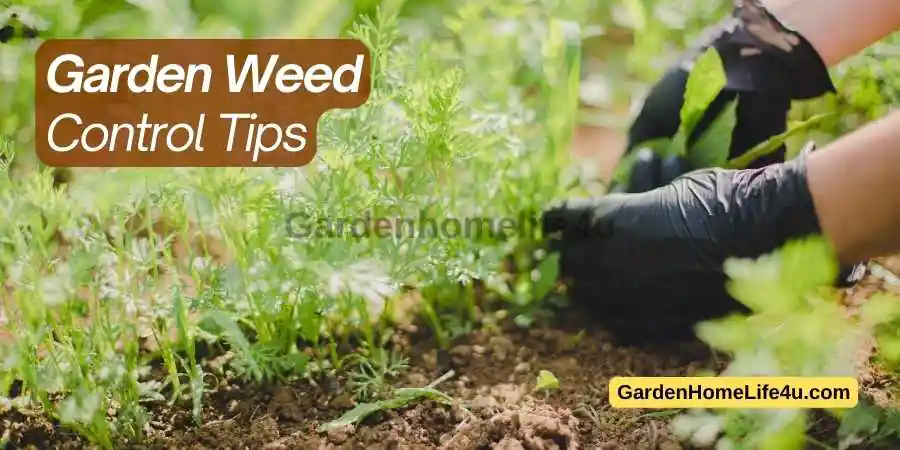A well-tended garden is a sanctuary of natural beauty, but the presence of weeds can quickly diminish its splendor. Weeds not only compete with your beloved plants for nutrients, sunlight, and space but can also mar the overall aesthetics of your garden. However, fear not! In this article, we will explore a range of proven methods and techniques that will empower you to effectively control weeds and maintain a pristine garden. From preventive measures and organic solutions to strategic cultivation and targeted removal, we will equip you with the knowledge and tools to reclaim your garden from the clutches of unwanted invaders. Get ready to discover the secrets to a weed-free paradise and unlock the full potential of your garden’s beauty.
Common Garden Weeds Identification 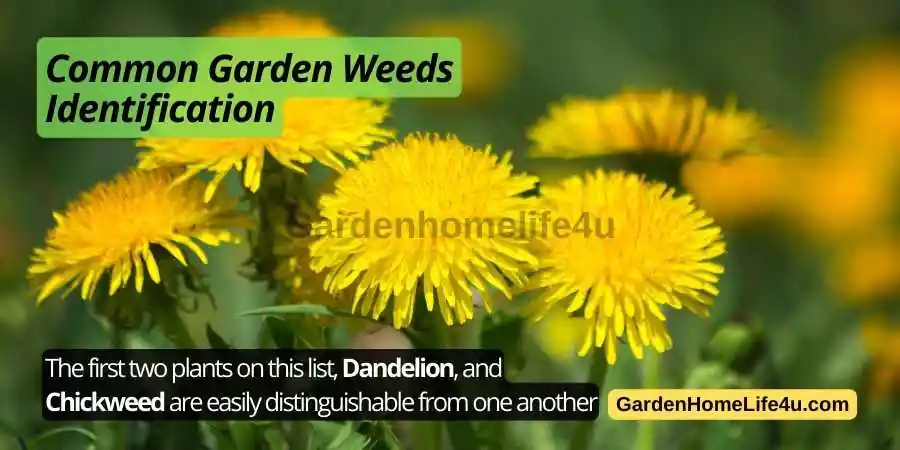
- Dandelion
- Chickweed
- Ground Ivy
- Pigweed
- Cat’s Ear
- Morning Glory and Bindweed (Morning Glory) are very similar to each other in appearance.
- They all have leaves that grow opposite each other on the stem.
- The flowers follow an almost identical pattern as well all being white or pinkish/purple, except for some varieties of bindweed which can be yellow or pink.
- These plants can also be distinguished from each by their root systems, Dandelion has deep central roots core for example, and are very hard to eradicate/extract completely.
Pigweed, Cat’s Ear, and Morning Glory are very similar in appearance. The first two plants on this list, Dandelion, and Chickweed are easily distinguishable from one another. Dandelions have a yellow flower head with many petals (like daisies) whereas chickweeds have small white flowers that look like stars. Both of them can be found growing in gardens but dandelions will also grow as wildflowers.
Categories of Weeds 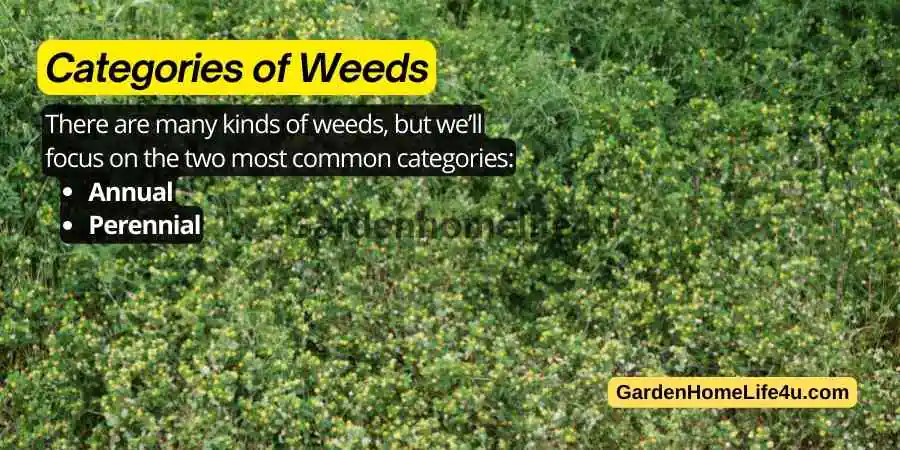
There are many kinds of weeds, but we’ll focus on the two most common categories:
- Annual
- Perennial.
- Annual weeds are those that grow from seed and die each year. These include crabgrass, chickweed, and purslane.
- Perennial weeds live for more than two years; some can live for decades! A few examples include dandelion, bindweed (also known as morning glory), the tree of heaven, and poison ivy.
Hand weeding is still the best way to remove weeds 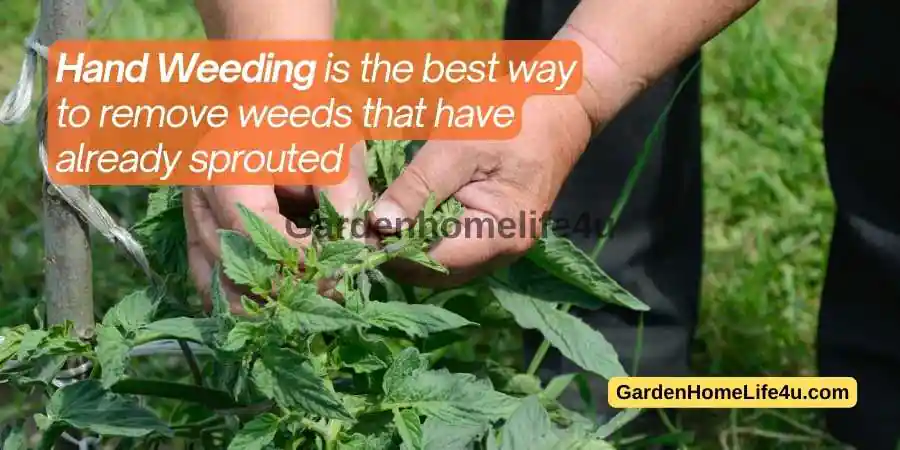
Hand weeding is the best way to remove weeds that have already sprouted.
If you don’t have time for this method, consider using plastic sheeting or newspaper to cover your garden until the plants are well established. Then, remove the sheeting and toss it into your compost pile.
Urban Myth of Driveway Protection Raisin layer?
The raisin layer is a myth. It’s a popular misconception that you can cover your driveway with a layer of sort of mulch Raisin and it will prevent weeds from growing in the cracks between the pavement. You often see people knocking on the doors and selling this service in built-up areas – Don’t fall for it.
It doesn’t work that way, though! The problem with this myth is that it gives people false hope. Instead, we should be encouraging them to learn about how to control weed growth without spending hours on their hands and knees tending to every little patch of grass or weed (and believe me, there will be lots of weeds).
Instead of the raisin layer, people should be encouraged to do some research about weed control methods that don’t involve covering their entire driveway with mulch. Unfortunately, there are no real solutions to this problem—at least not yet. In order to keep weeds under control in your driveway or sidewalk, you’ll need to pull them out by hand as soon as they appear.
Can Weed be controlled without Harmful Chemicals? 
If you have weeds growing in your yard and you’re wondering if there is a way to get rid of them without using harmful chemicals, then this article is for you. We’ll be talking about some natural solutions that will help keep your garden free from unwanted pests.
Pulling weeds early in the summer 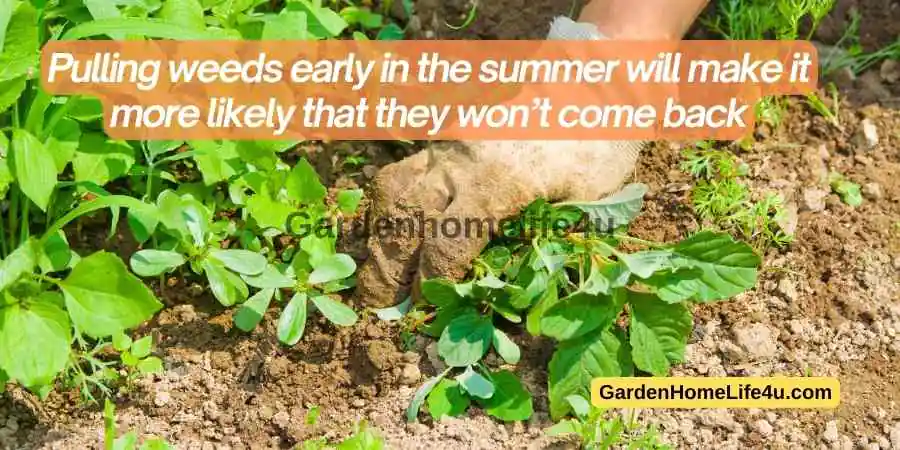
- Pulling weeds in the summer is a good thing to do. Doing so won’t make them grow faster, stronger, or spread faster.
- In fact, pulling weeds in the summer is one of the best ways for you to get rid of them and keep them from spreading their seeds all over your garden.
- Pulling weeds in the summer will also help you reduce soil erosion by preventing rainwater from washing away topsoil that holds nutrients for plants and keeps roots moist enough to grow well.
Keep Weeds from producing seeds.
One of the most important steps in controlling weeds is to keep them from producing seeds. You can do this by pulling out the weeds before they flower or go to seed. If you don’t want to get your hands dirty, invest in a good pair of gardening gloves and pull them as soon as you see them.
Using Vinegar as Weed Control 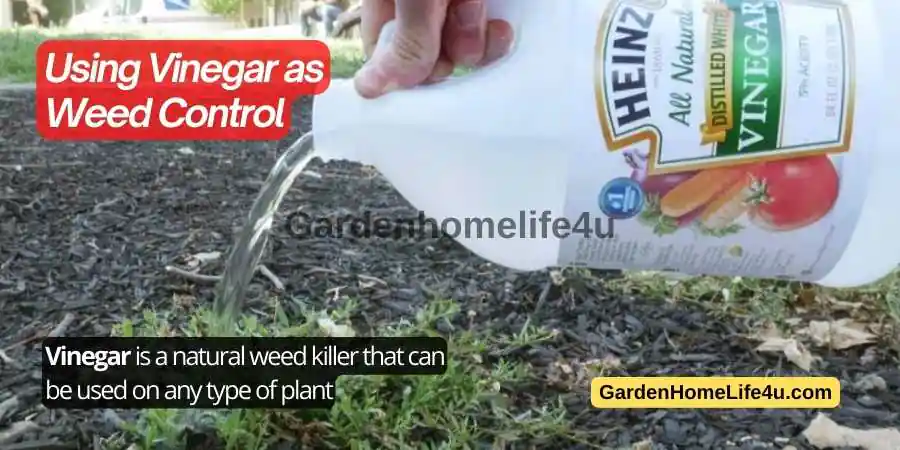
- Vinegar is a natural weed killer that can be used on any type of plant.
- When applied to your garden, vinegar will kill weeds by damaging their roots.
- The acidity of the vinegar destroys the protective layer around roots, causing them to wilt within hours after application.
- Vinegar is an organic weed killer and there are few side effects when using it in your garden; however, it may cause slight damage if you don’t dilute it properly before applying it to plants.
Using Salt as Weed Control
Salt is a natural weed killer, and it’s one of the oldest methods of controlling weeds. Although salt doesn’t kill all plants, it does damage the cells in both young and mature weeds. Salt can be used to control annuals, perennials, and grasses.
- Salt works by damaging the moisture balance within your weed’s leaves; when applied at full strength, this can cause them to dry out and die quickly.
- However, if you use too much salt or apply it at the wrong time of year (e.g., when there’s already plenty of water in your soil), then you could actually make your problem worse by encouraging more growth than before!
- You should only use salt as a last resort if other options have failed—for example, if they involve expensive chemicals that aren’t safe for children or pets around ponds/lakes etc.
- Salt can be used as a concentrate mixed up in manual or powered spray and can be sprayed directly onto the plants and around roots.
Using Membrane and Fabric under Mulch
- To prevent weeds from growing in the shade of your mulch, place a layer of plastic or fabric underneath.
- This layer can also be used as a barrier to help prevent soil erosion and compaction while keeping moisture where you want it.
- If you do not have access to either membrane or fabric, consider using a weed barrier product such as Reemay instead.
An organic mulch will help suppress and discourage weed growth.
Organic mulches are an excellent way to suppress weed growth. You can use any organic material for your mulch, including:
- Leaves
- Wood chips or shavings from your local tree service provider
- Composted organic matter (stale vegetables, coffee grounds, etc.)
A mulch of decorative pebbles and gravel
- If you’re looking for a low-maintenance way to keep your garden weed-free, consider using decorative pebbles and gravel.
- They’re an attractive alternative to mulch because they blend in with the rest of your landscape, and they’re easy to spread.
- Spread the pebbles or gravel in flower or plant beds with care and with a decorative sense.
- This will not stop the weed 100% but it will rather help control the population and spread.
- Decorative pebbles and gravel tend to be inexpensive compared with other types of mulch. This is because they are easy to find and can be used in a variety of ways.
- They can be spread as a surface layer in flowerbeds or as a border around plantings. It is also possible to use decorative pebbles and gravel to create walkways through the garden or around the yard.
- The most important thing about using decorative pebbles and gravel for landscaping purposes is that you need to take care when spreading them out so that they do not end up looking messy or unevenly distributed.
Using Heat to control Weed
Heat can kill all parts of a weed: its roots, stem, leaves, or flowers quickly and effectively! Here’s how it works:
- If you want to kill only the seeds on your plants then use a high-pressure steam cleaner for about 5 minutes per plant or until there’s no more steam coming out from under it anymore;
- If all you need is to kill off just those pesky roots underneath ground level then dig up those areas with a shovel or spade before applying pressure from above;
- If all else fails then grab yourself some gasoline which will burn anything including grassroots hence be very careful in using gasoline directly.
- Beware that using flames or burner application will rather leave black marks on pathways and side walks which can look rather unpleasant.
Don’t throw unwanted plants into the compost pile
Compost from weeds is safe and full of nutrients, as long as you make sure that the compost bin is turned over frequently. This helps keep seeds and roots from growing into new weeds, ensuring that your compost will be free of unwanted plant life.
Organic mulches, take a while to break down.
Organic mulches, such as wood chips and shredded leaves, take a while to break down. While they’re decomposing, they can cause problems for the environment by leaching nutrients into groundwater and creating anaerobic conditions that rob the soil of oxygen. They also need to be replaced every year or so since they don’t last very long.
Use an edging tool to cut a straight line
The most important thing to remember when edging your garden beds is to keep the grass and bed edges straight. You can do this by using a string line, which is simply a piece of string tied between two stakes. The string should be taut and straight, with no curves or bumps in it.
Once you’ve got your string line ready, use an edging tool to cut along it. An edging tool will allow you to make super clean cuts into the ground that won’t tear up your grass or damage any roots in the process. If you don’t have an edger handy.
Weeds grow everywhere and eventually
The battle against weeds is a never-ending one. It’s never-ending because weeds can grow back at any time, even after you have completely eradicated them.
If you want to get rid of most of the weeds in your garden, then you need to be committed to making sure that they don’t grow back again.
It takes time and effort to maintain weed control but if you do it right, then it will definitely pay off in the long run!
Conclusion
Weed control is an important part of keeping your garden looking beautiful and healthy. By following these tips, you can keep your garden free of weeds for years to come!
FAQ – Garden Weed Control
What is the ecological impact of using weed killers for domestic purposes?
The ecological impact of using weed killers for domestic purposes can be significant, as these chemicals can have negative effects on both the environment and human health.
Weed killers, also known as herbicides, are designed to kill or control the growth of unwanted plants. However, these chemicals can also have unintended effects on other plants, insects, and animals in the environment. For example, some herbicides can contaminate soil and water, killing beneficial organisms and disrupting ecosystems.
In addition to their direct ecological impact, weed killers can also have indirect effects on human health. Exposure to herbicides has been linked to a range of health problems, including cancer, reproductive issues, and neurological disorders.
To minimize the ecological impact of weed killers, it’s important to use them only when necessary and to follow the instructions on the label carefully. Consider alternative methods of weed control, such as hand weeding or using organic weed control products, and always dispose of herbicides safely and properly.
Is Any of the common UK Garden Weeds poisonous?
While many common UK garden weeds are not poisonous, there are some that can be harmful if ingested or if their sap comes into contact with the skin.
One example is the common ragwort, which is a biennial or perennial weed that can be found throughout the UK. Ragwort contains toxic alkaloids that can cause liver damage in horses, cattle, and other livestock if ingested. While it’s not poisonous to humans, it’s still important to wear gloves when handling ragwort to avoid skin irritation.
Another example is the giant hogweed, which is an invasive plant that can grow up to 5 meters tall. The sap of giant hogweed contains chemicals that can cause severe skin irritation, blistering, and even long-lasting scars. Contact with the sap can also make the skin more sensitive to sunlight, leading to severe burns and long-term skin damage.
Other common garden weeds, such as dandelions, plantain, and common nettle, are not poisonous and are often used for medicinal or culinary purposes.
Is Any of the common Garden Weeds in the UK edible?
Yes, many common garden weeds in the UK are edible and even tasty.
- Dandelion – The entire plant is edible, from the root to the flower. The leaves can be eaten raw in salads or cooked like spinach, while the roots can be roasted and used as a coffee substitute.
- Plantain – The young leaves can be eaten raw in salads or cooked like spinach. The seeds can also be harvested and used as a laxative.
- Common nettle – The leaves can be steamed or boiled and used in soups, stews, and teas. They’re rich in vitamins and minerals, including iron and calcium.
- Common burdock – Found all over the UK and has characteristic big oval leaves – All parts of it are edible.
- Wild parsley – Edible and very tasty especially the stem part of it. Sprinkle it over salad or steer fries.
- Chickweed – The young leaves can be eaten raw in salads, while the older leaves can be cooked and used like spinach.
- Purslane – The leaves and stems of this succulent weed can be eaten raw in salads or cooked like spinach. It’s high in omega-3 fatty acids and other nutrients.
Always harvest weeds from an area that hasn’t been sprayed with chemicals and avoid picking them from roadside areas where they may have been exposed to pollution.

